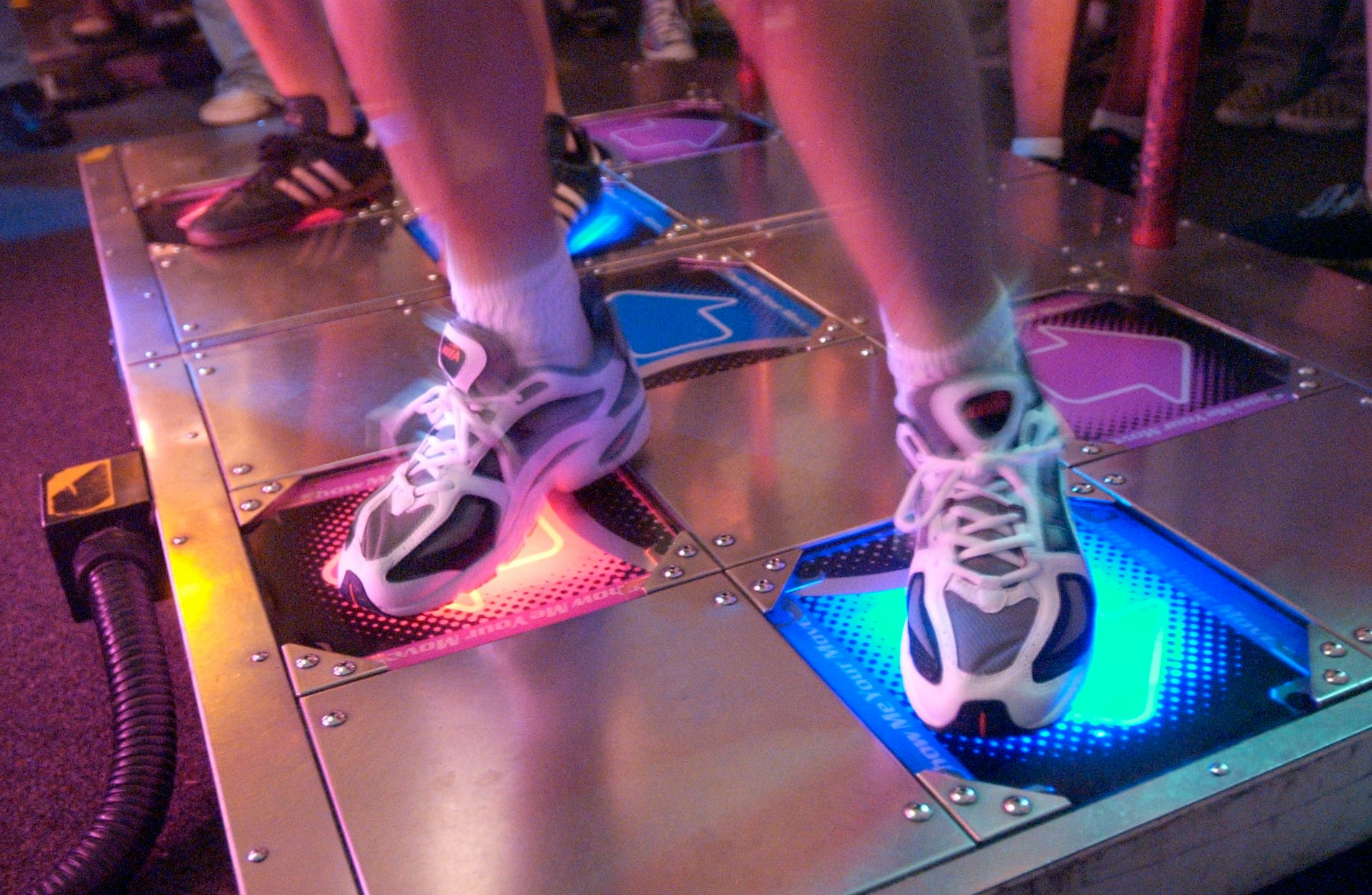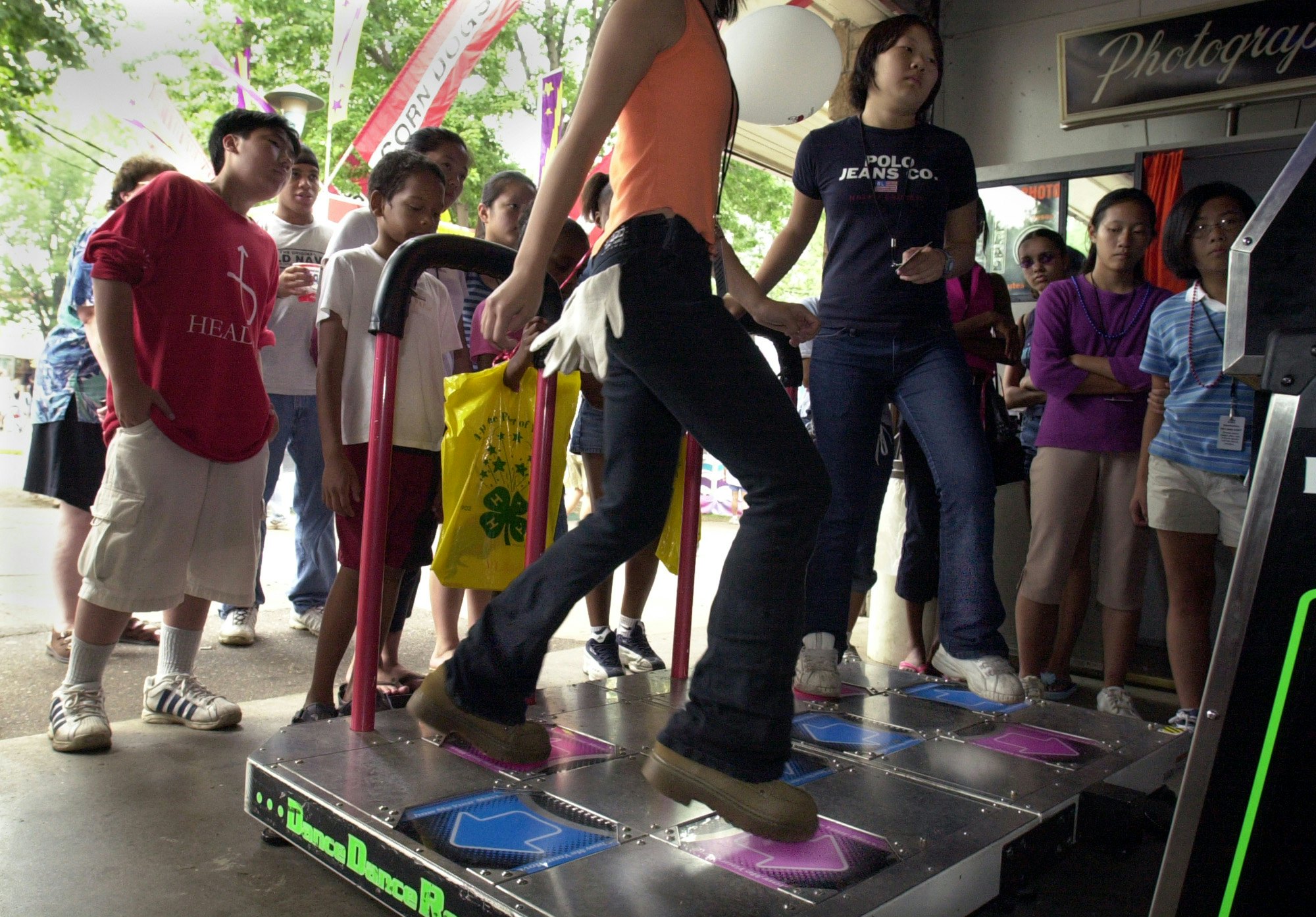
The Tetris effect is a term coined to describe when people play so much of the eponymous game that they begin to see its colorful blocks falling downward in their minds. When it comes to rhythm games, those Tetris blocks can be replaced with colorful arrows seared into your brain. Originally released in Japan on September 26, 1998, Konami’s iconic rhythm game rose to popularity thanks to its catchy tunes, fancy footwork, and the enduring social aspect of the game. Twenty-five years later, Dance Dance Revolution is still one of the best rhythm games ever made — and its influence can be felt across the entire video game industry.

While rhythm games existed for years before Dance Dance Revolution hit the arcades, with titles like 1996’s PaRappa the Rapper familiarizing audiences with the genre, DDR brought a unique flair that stems from the arcade cabinet’s design. DDR machines are actually two parts: the first being the actual cabinet that displays the game, with the second part bearing a dance pad that sits atop the floor section of the cabinet.
The dance pad was designed with four directional buttons designed to be stepped on. Choose a song and arrows rise toward a line. The goal is to step on the corresponding buttons in sync with the beat. The closer to the beat, the better the score. On-screen prompts famously give feedback, including “Boo” if you’re off the mark. It’s a mechanic that can still be felt in modern rhythm games, like 2022’s Trombone Champ, which will ridicule bad moves by putting “Nasty!” on the screen.
DDR’s original release included only 11 tracks, but players quickly flocked to the machines thanks to the unique social aspect. Playing DDR was something to be done with friends or even strangers at an arcade thanks to a brilliant multiplayer design. Each machine had two dance pads that sat next to each other, allowing two people to dance with (or against) each other. The same blend of battles and duets returned in games like Rock Band and Guitar Hero years later.
In 1999, DDR went international and quickly became a lifestyle. At a time when many were flocking to arcades to play Street Fighter II and take part in the burgeoning fighting game scene, players also found DDR machines to enjoy. DDRFeak.com was founded in 2000 by Bay Area DDR fans out of a desire to get together and talk about the game, and over the next two decades, the site grew into one of the biggest resources on DDR. While DDRFeak.com is no longer updated, it still has resources like a map with DDR machine locations across the world.
But it wasn’t just gamers and arcade purveyors who got in on the DDR craze. As home console gaming took off in the 2000s, DDR was no longer confined to the arcade and could be enjoyed in your living room with the help of soft dance pads connected to a console. DDR was eventually recognized as a helpful way to encourage fitness, with schools in the U.S. incorporating it into their programs. In 2012, Konami released Dance Dance Revolution Classroom Edition designed specifically for this purpose.
DDR’s influence is ever-present in its popularization of rhythm games and fitness. Nintendo’s Wii Fit is a clear descendant of DDR just as much as Ubisoft’s annualized series Just Dance. Today, VR gem Beat Saber is the latest rhythm game to carry DDR’s torch. A quarter of a century since the first DDR cabinet was released in Japan, it continues to feel as revolutionary as its title suggests.







